Behind the Scenes
15 Books
a.k.a. “Playing catch up with the stacks [3]”. I did a version of this in March and also back in May of 2011.
Basically, there comes a point where I’m swamped by newly received reading materials.
Stacks on stacks on stacks, if you will. (Sorry, I live in the dirty south, the home of T-Pain, and so I hear that Young Chris song incessantly and always think “stacks” instead of “racks”.)
Since I love lists and since I’m always curious about what others are reading, I assume others might be interested in what I’m reading. So here, then, are fifteen things I’m currently in the midst of:

The Mystery Guest by Grégoire Bouillier
In the book, released in English in 2006 as The Mystery Guest, Boullier recounts his invitation-by an ex-girlfriend to whom he hadn’t spoken in years-to be the eponymous “mystery guest” at [French artist] Sophie Calle’s thirty-seventh birthday party in 1990. Every year in the ’80s and early ’90s, she hosted a birthday party to which she’d invite the number of guests corresponding to the age she was turning, and to which one guest would bring someone Calle didn’t know and who would symbolize The Future, in all its unpredictability.
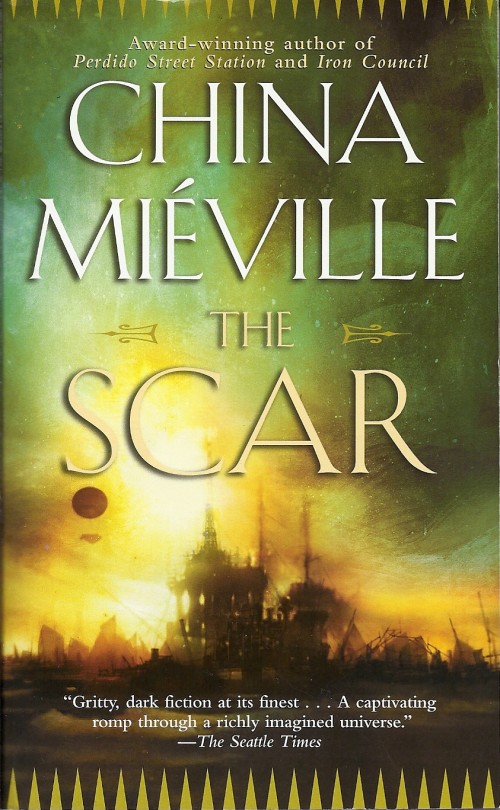
The Scar by China Miéville
Set in the same sprawling world of Miéville’s Arthur C. Clarke Award-winning novel, Perdido Street Station, this latest epic introduces a whole new cast of intriguing characters and dazzling creations.
Aboard a vast seafaring vessel, a band of prisoners and slaves, their bodies remade into grotesque biological oddities, is being transported to the fledgling colony of New Crobuzon. But the journey is not theirs alone. They are joined by a handful of travelers, each with a reason for fleeing the city. Among them is Bellis Coldwine, a renowned linguist whose services as an interpreter grant her passage—and escape from horrific punishment. For she is linked to Isaac Dan der Grimnebulin, the brilliant renegade scientist who has unwittingly unleashed a nightmare upon New Crobuzon.
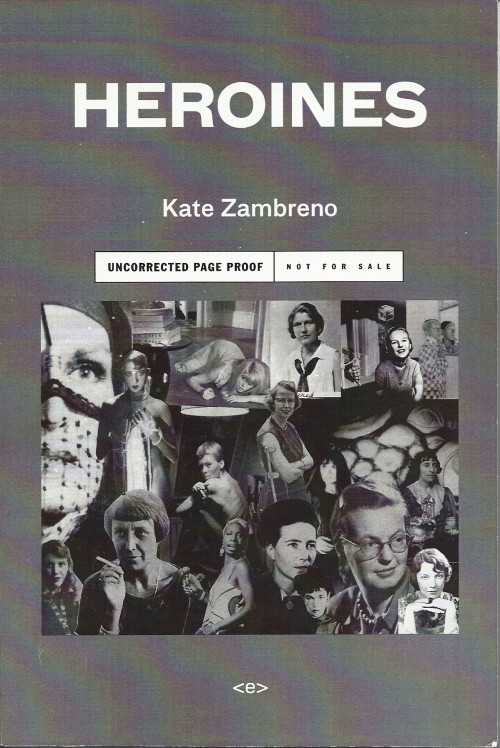
Heroines by Kate Zambreno
In Heroines, Zambreno extends the polemic begun on her blog into a dazzling, original work of literary scholarship. Combing theories that have dictated what literature should be and who is allowed to write it–from T. S. Eliot’s New Criticism to the writings of such mid-century intellectuals as Elizabeth Hardwick and Mary McCarthy to the occasional “girl-on-girl crime” of the Second Wave of feminism–she traces the genesis of a cultural template that consistently exiles female experience to the realm of the “minor,” and diagnoses women for transgressing social bounds. “ANXIETY: When she experiences it, it’s pathological,” writes Zambreno. “When he does, it’s existential.” By advancing the Girl-As-Philosopher, Zambreno reinvents feminism for her generation while providing a model for a newly subjectivized criticism.
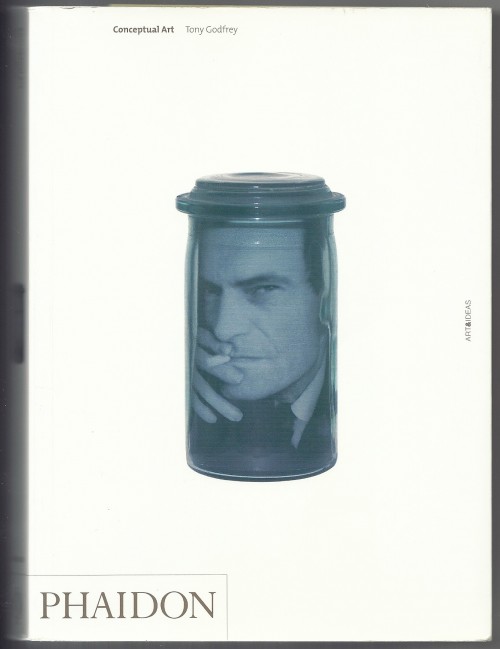
Conceptual Art by Tony Godfrey
Tony Godfrey’s book is the intelligent, well argued, comprehensive and beautifully presented survey of Conceptual art we have been waiting on for years. It is both accessible and easily readable while at the same time conceding little intellectual high ground. This is an exquisitely designed paperback which both looks and feels the business. Buy it, steal it, or get your local library to buy it. This is that rare thing – an indispensable classic that is a must for anyone interested in understanding the roots of contemporary art.
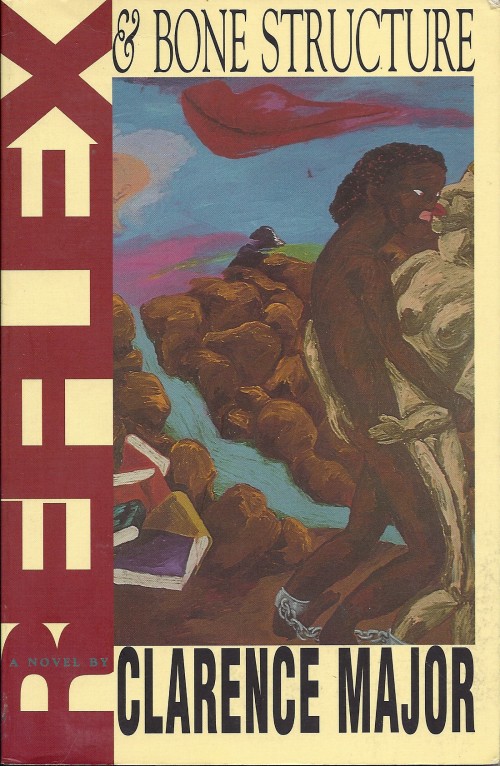
Reflex and Bone Structure by Clarence Major
Approximately 433 fragments which spotlight the antics of Cora Hull, black Greenwich Village stage actress, and her all-male harem of three. Cora needs variety, you see, and the scene keeps changing faster than a Bell & Howell slide projector with no hint from flash to flash of where we are headed. This is a piece of fiction like those various abstract paintings the author scans when he halts his early American mail coach in front of the Brooklyn Museum: it is about itself. It purports to be an extension–rather than a duplication–of reality. Exactly what happens to Cora is she gets blown up for some reason along with lover #3, Dale, whom the author admits he can’t even get into focus, let alone characterize. Cops prowl around shaking white powder over the corpses, and the author goes out to get drunk with lover #1, Canada. Causality? Forget it. Either Major’s got you hooked on his series of wildly improbable spot commercials for a sexy lady in a Fouke-dyed black fur with deep sidepockets, or not. A dot-to-dot, fill-in-the-blanks exercise in new fiction.
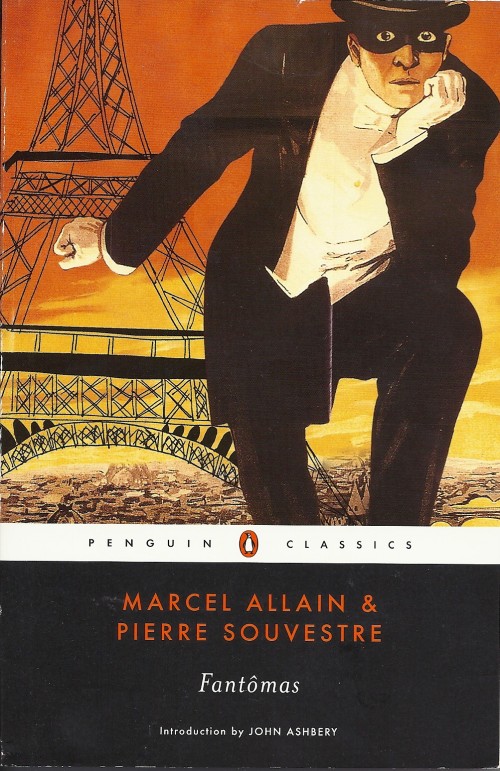
Fantomas by Marcel Allain & Pierre Souvestre
One of the most popular characters in the history of French crime fiction, Fantômas was created in 1911 and appeared in a total of 32 volumes written by the two collaborators, then a subsequent 11 volumes written by Allain alone after Souvestre’s death. The character was also the basis of various film, television, and comic book adaptations. In the history of crime fiction, he represents a transition from Gothic novel villains of the 19th century to modern-day serial killers. [also] …many prominent figures on the French cultural scene hailed the work as “the modern ‘Aeneid’ ” (Blaise Cendrars), “one of the richest works that exist” (Guillaume Apollinaire), “absurd and magnificent lyricism” (Jean Cocteau).
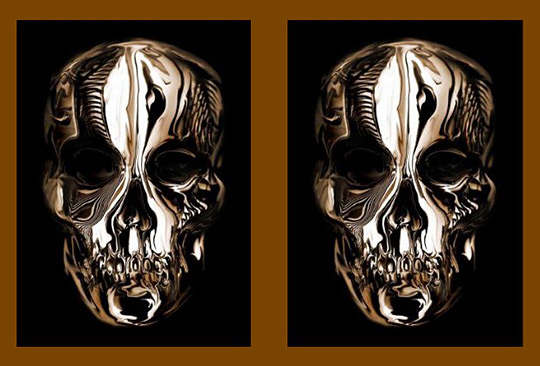
Alexander McQueen: Savage Beauty
Featuring the most iconic and radical designs of his prolific career, Alexander McQueen: Savage Beauty examines the designer’s evolution from the start of his fledgling label, to his years as creative director at Givenchy in Paris, and finally to the collections of his own world-renowned London house. It reveals how McQueen adapted and combined the fundamentals of Savile Row tailoring, the specialized techniques of haute couture—such as lacework, embroidery, and featherwork—and technological innovation to achieve his distinctive aesthetic. It also focuses on the highly sophisticated narrative structures found in McQueen’s collections and in his extravagant runway presentations, which suggested the most avant-garde installation and performance art.
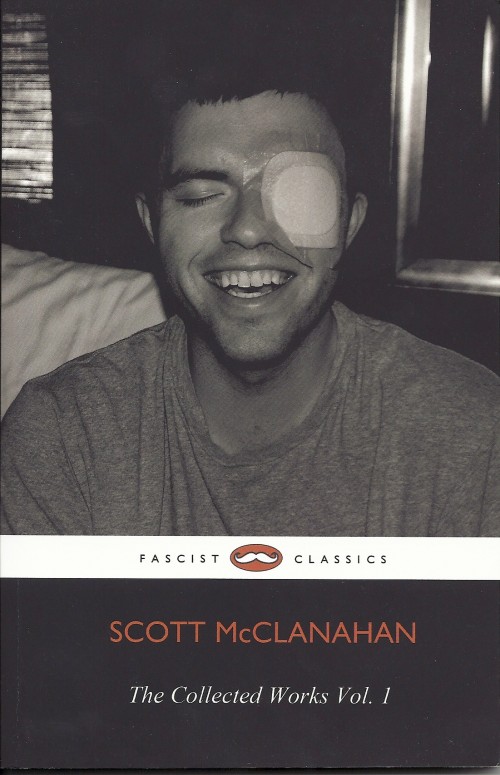
The Collected Works of Scott McClanahan Vol. 1 by Scott McClanahan
These are all short stories yet it reads as a long conversation. If someone transcribed a conversation they had with a high school friend, it might read a little bit like these stories. Some of these stories dive pretty deep into Scott’s childhood. Childhood is where one forms a worldview. Thus the jumping between his childhood (the past) and his adulthood (the present) makes sense. It shows how he comes to his decisions as an adult. Plus he captures living in West Virginia, much like he did in his previous book ‘Stories V!’ Here the mood comes across even more clearly. Scott is virtually next to you yammering on. Do not interrupt him. He’s about to come to the beautiful conclusion to the story. And the endings are worth it. [Beach Sloth]
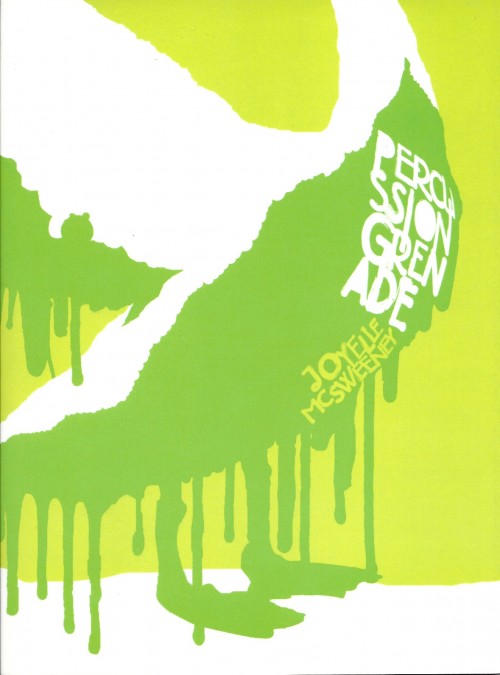
Percussion Grenade: Poems & Plays by Joyelle McSweeney
Music and drama as weapons of productive destruction. This collection by prize-winning, massively influential literary star Joyelle McSweeney explodes the twinned and dangerous notions that images are pretty, and that they land predictably. Power struggles in all contexts and the driving ever-presence of a lexicon of puissance make this a bracing read, not for the faint of heart or mind.
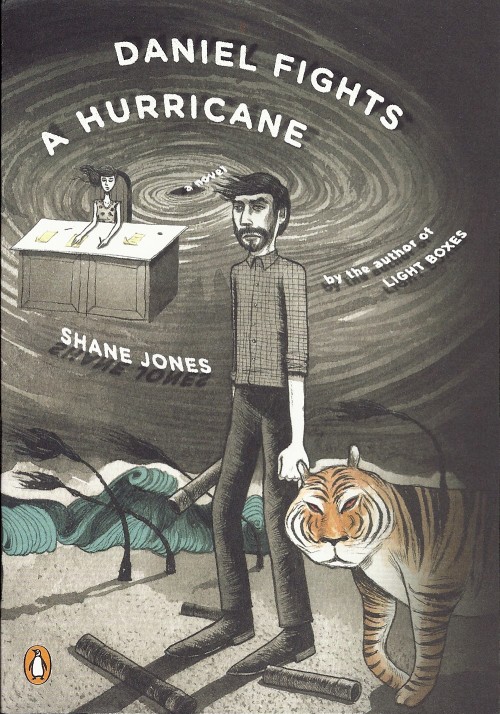
Daniel Fights a Hurricane by Shane Jones
It’s a wild book full of brain-consuming storms and jacked-up teeth and mysterious tigers and breakfast at McDonald’s. While so many other books and movies these days seem to be afraid of their own fantasies, Shane Jones goes for the throat. Fans of his previous novel, Light Boxes, or who like Donald Antrim or Kelly Link or, I don’t know, Buñuel, can expect a black, fun freakshow. [B.B. @ Vice]
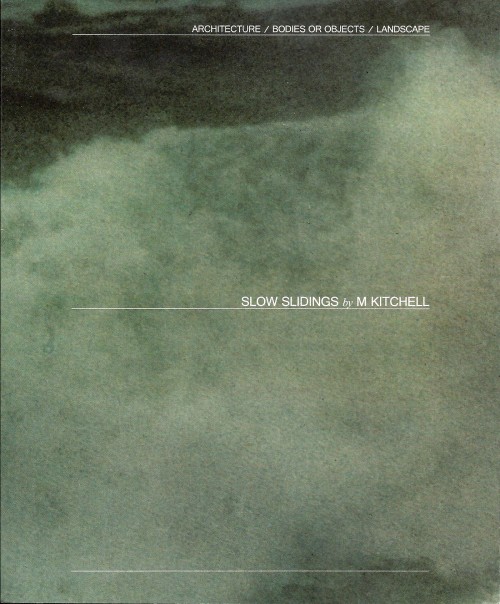
Slow Slidings by M Kitchell
Slow Slidings bills itself as a book that should be filed in stores under “Architecture / Bodies or Objects / Landscape,” but you could just as easily find it in “Haunted Death Sex / Sadist VHS Mystery / Wet Nightmares for Freaks.” Taking equal cues from messed up foreign psychological horror films, paranormal photography, and the French—the new book M. Kitchell has assembled bends both the face and ass of the American novel. If you get turned on from being weirded out about being murdered, you just might touch yourself while reading it. [B.B. @ Vice]
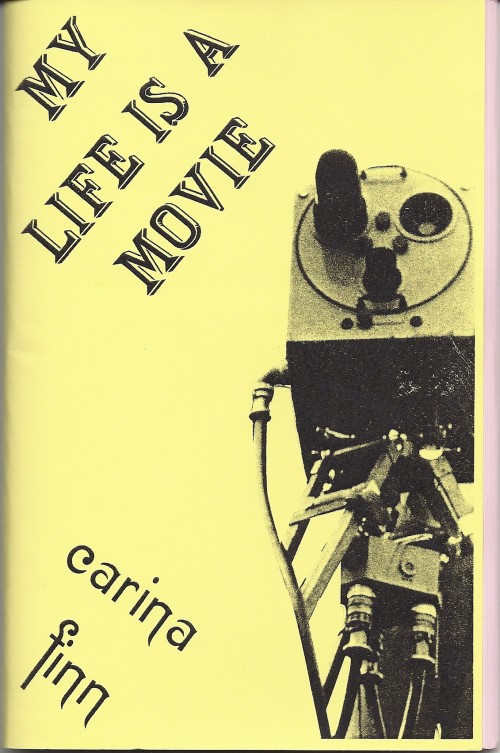
My Life is a Movie by Carina Finn
Carina Finn’s poetry is the icing-flavored coffee of the English language. I knew I needed this book when Finn posted COSTUME DRAMECONOMIES (WHAT THE NEW NEW SINCERITY CAN DO FOR YOU!) at Montevidayo. Finn said she arrived at her final thesis reading at Notre Dame “in a pretty typical outfit: red-orange lace babydoll dress, white thigh-high fishnets with giant bows, black over-the-knee boots, a blue satin ribbon from a poet-friend worn as a belt.” When she was finished reading, no one spoke to her. [Kari Larsen]
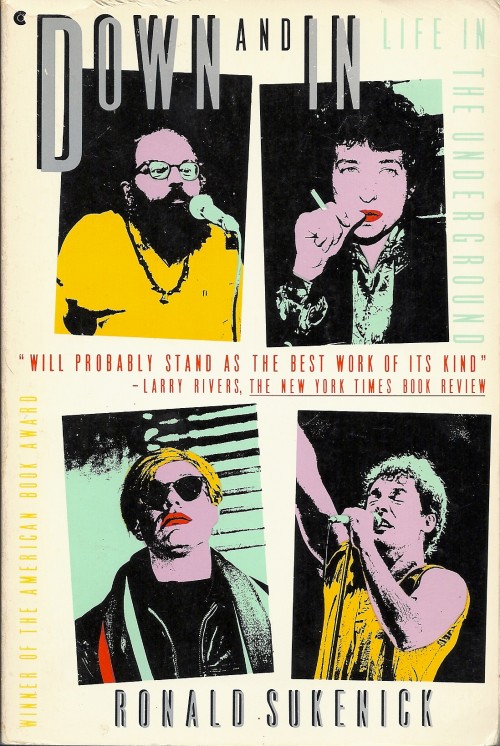
Down and in: Life in the Underground by Ronald Sukenick
Ronald Sukenick’s Down and In descends into a paradisal hell of sex, art, and money: plenty of the first two, none of the third — or…golden pots of it, if the media decide you make good copy, and the markets find you marketable. [JR Foley]
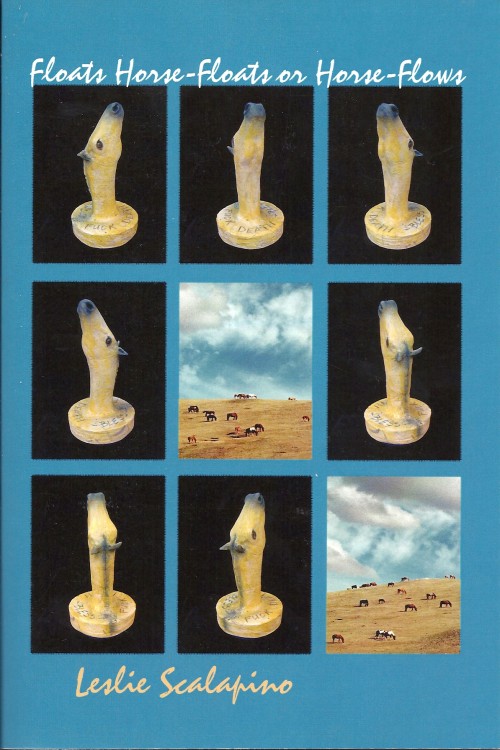
Floats Horse-Floats or Horse-Flows by Leslie Scalapino
Miners, polar bears, insurgents sweeping the desert in Toyota pickups, a detective on the trail of illegal fur traders, Venus Williams’ deconstructed forehand, wild horses, blooming chrysanthemums, tadpoles eating corpses in the Euphrates, and so much more — Leslie Scalapino’s Floats Horse-Floats or Horse-Flows is a startlingly beautiful, politically engaged, poetic novel. Narrative moments arrive out of inchoate states — an alexia where unknown words create a future — and the reader is continually and unexpectedly moved by the buoyancy and breathtaking velocity of Leslie Scalapino’s language.
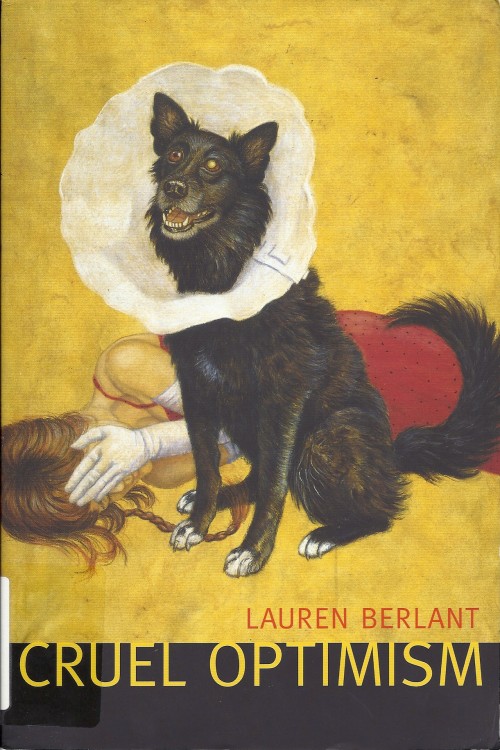
Cruel Optimism by Lauren Berlant
In her new book Cruel Optimism, University of Chicago English professor Lauren Berlant describes the titular phrase as “when something you desire is actually an obstacle to your flourishing.” We cling to the fantasy that “this time, nearness to this thing will help you or a world to become different in just the right way.” This time she’ll really love you. This time you’ll lose the weight. This time you’ll make enough money. This time the candidate’s promises will last after election night. This time the mission will really be accomplished. This time, you will be happy. Except, you know, you won’t. At least not for long.
Happy fucking New Year. [JENNA BRAGER]

I really liked The Scar.
dont apologize for yc
holy shit that clarence major cover art is nutso in the best way
The Scar and McClanahan are both so goddamn good. Two of my favorites. Great taste Chris.
[…] pm and is filed under Behind the Scenes. You can follow any responses to this entry through the RSS 2.0 […]
I’ve only just dipped my eyes into The Scar, but those opening pages are so badass, especially in regard to the absence of humanity: sort of like the “Time Passes” section in Woolf’s To the Lighthouse meets H.P. Lovecraft. Excited to get into it, especially because I love Perdido Street Station!
Yeah, my exposure to Southern rap over the past three years has been a real learning experience for me. I’m trying to teach myself about it. (That YC song is so catchy!) If you are more familiar with the genre, Marshall, I’d love recommendations. Seems like the local hip hop station I listen to plays a lot of Waka Flaka Flame, Gucci Mane, Young Money stuff, but I’d like to learn more about the less mainstream stuff that might be real good.
I know, right! Major did it himself, I think. He’s also a painter. And in my opinion, he’s one of the greatest, most underrated, American writers working today.
“just dipped my eyes into” gives me the willies
I saw that Alexander McQueen Savage Beauty exhibit in New York last summer and it was dark and haunting. Wondered what the book would be like, but couldn’t afford it. Read about it here if you feel like it (w/ pics) http://shwardo.tumblr.com/post/7548680292/alexandermcqueen
Thanks for posting the reading list, chris. That Scott McClanahan lazy fascist/penguin classic looks great
A friend and I were just talking about Clarence at dinner on Friday night. She’s the editor of a Brooklyn weekly newspaper about my age (~60) and she had him for a poetry writing class when he taught at Brooklyn College in the early 1970s. She said he was by far the best creative writing teacher she ever had. Comparing him to her teacher Mark Strand, she said Clarence was most concerned with trying to help each student find her own voice and being someone who guided her along the way. (I won’t tell you some of the stuff she said about Strand, although I found him to be a nice person when I knew him at Bread Loaf in ’77.)
I was working at the Fiction Collective office in Brooklyn College’s old downtown building in 1975, when “Reflex and Bone Structure” originally came out from the Collective; I can remember hauling all the review copies in Jiffy bags from our office on Schermerhorn through downtown Brooklyn to the General P.O. I think I also wrote, or helped write, the press release for the book. The original cover had a great photo of Clarence: http://www.whitingbooks.com/?page=shop/flypage&wt=1.00&product_id=6603
He is a terribly underrated writer in a variety of genres. I’m excited that you’re also reading Sukenick, but of course “Down and In”‘s title is based on Sukenick’s amazing early book “Up and Out,” which was astonishing to me when I first read it. Ron was a brilliant writer, too — we published “98.6” as one of the early FC books, and he was one of the founders, along with Clarence, Jonathan Baumbach and Peter Spielberg (my teachers as an undergrad and MFA student at Brooklyn College), B.H. Friedman, Mark Mirsky, Raymond Federman, and others.
I’d recommend most Sukenick’s “The Death of the Novel and Other Stories.” I’m so glad people are reading Major and Sukenick. Many of the Fiction Collective authors, especially the ones who published their books early on, when I worked there, were very influential in my life. (In this interview from over 30 years ago, I talked about what I did there: http://www.gargoylemagazine.com/gargoyle/Issues/scanned/issue17/grayson_interview.htm.)
I just started reading The Scar last night. Pretty good so far.
And Christopher–all of my high school students here in Tennessee really like 2 Chainz and Cash Out.
http://youtu.be/7Dqgr0wNyPo
http://youtu.be/SlvLUcaRdGI
Wow, thanks for sharing this story, Richard! You should write an essay (or book!) about your time with the early FC2 — I imagine you have loads of other stories like this one — that would be awesome and I’m sure many people would love to read it. I know I would! (My dissertation director is R.M. Berry, former publisher of FC2 and now advisory board member.)
I taught Major’s My Amputations last year and students seemed to find it enjoyably perplexing.
Sukenick’s “Death of the Novel” is one I read quickly and should have savored more, sadly it’s out of print.
Going to go read that interview now. Thanks again!
I’m so jealous that you got to actually experience the exhibit itself, Rich. Alas, I must settle for the catalog, as I was stuck in Florida and couldn’t make it up to see it. Thanks for that link.
The book is really amazing. It’s over-sized, it has a holographic image thing on the front where when you turn it you see McQueen and then a silver skull. It’s really pretty. And inside there’s a bunch of essays and commentary and quotes from McQueen and big color photos.
Lazy Fascist is putting out some really nice books. Really terrific design work going on over there. I’ve only read the first couple of stories in Scott McClanahan’s book, but they are really good. I am a huge fan of his videos, and so while I’m reading his words I’m hearing his voice from the videos. It’s great.
Thanks, Christopher. I have to say I think it’s funny you call it “early FC2.” I don’t know when the name change happened, because by then I had moved to Florida and was out of the loop. I did meet R.M. Berry, who I admire a lot, at an FSU conference on literary magazines/small presses/webzines (I gave a presentation/workshop on webzines) in March 2005, which was the 30th anniversary of the Fiction Collective’s initial three books by Baumbach, Spielberg and Friedman. I spent a lot of time in Tallahassee back in the 90s, when I was an attorney working on a project based there called Schoolyear 2000 and four times I was on the state arts council’s literature grant panels, which used to have two- or three-day meetings. I could tell you stories about how grant money got funded (or didn’t) to writers and literary organizations but then someone would have to kill me.
Yeah, I came across a couple of 2 Chainz mixtapes at DatPiff, but didn’t listen to them…will go back and get them. That Kanye Mercy song is infectious, for sure. Seems like I’ve heard that Cash Out tune, but not sure. Thanks for sharing these tips, Quincy!
[…] did a version of this in August, and March, and also back in May of […]
[…] 2012 I did one of these in November, August, and March, and in 2011 I did one […]